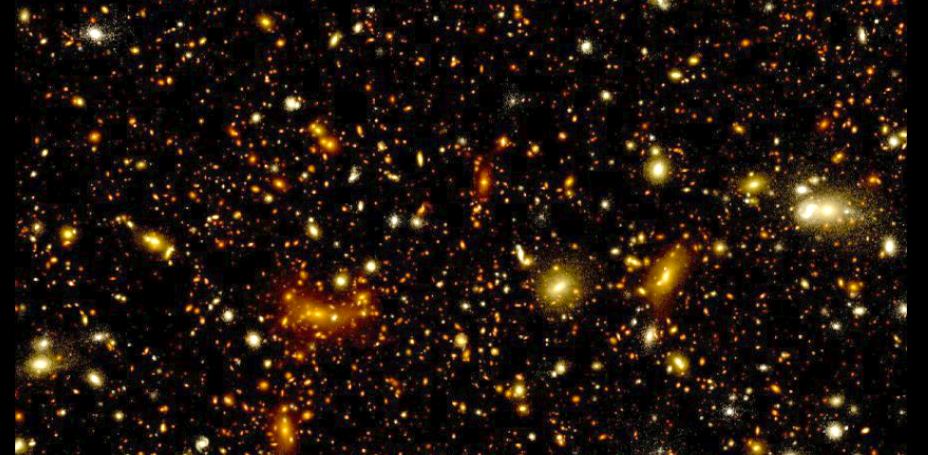Horizon-AGN
(Kaviraj)
A significant recent advance has been the advent of hydro-dynamical cosmological simulations, which offer survey-scale predictions of the evolution of galaxy properties over cosmic time. When calibrated against the array of multi-wavelength observational data now available, these models offer powerful insights into the processes that drive galaxy evolution, especially in the still-poorly-understood high-redshift Universe.
Horizon-AGN is a cosmological hydro-dynamical simulation in a comoving volume of 100 Mpc/h, with 1024^3 dark matter particles in a Planck cosmology, performed using the adaptive mesh refinement code RAMSES (Teyssier, 2002). The adaptive mesh refinement technique enables zooming in with more resolution elements in regions of interest (e.g. structures such as cosmic filaments, galaxies, giant molecular clouds, etc), with the Riemann-based hydro-dynamical solver employed by the code being very efficient at capturing sharp discontinuities in the gas flow and gas instabilities that spontaneously arise in a cosmic turbulent medium. The simulation includes hydrodynamics and gas cooling and heating, with sub-grid models employed for the treatment of the physics of galaxy evolution: star formation, feedback from stars (stellar winds, Type II and Type Ia supernovae), chemical enrichment from six species (O, Fe, C, N, Mg, Si) and feedback from active galactic nuclei. The minimum cell size is 1 kpc, constant in physical length.
At Hertfordshire, we are using Horizon-AGN in concert with survey data from ground and space-based instruments (e.g. HST and the SKA precursors) to perform a series of projects that probe key open questions in galaxy evolution, particularly in the early Universe: e.g. at what redshifts did the Hubble sequence emerge? at what epochs and via what processes were the primordial spheroids built? what processes dominated the build-up of stellar mass and black holes around the epoch of peak star formation? what role did AGN have in triggering or suppressing early star formation?
A description of the simulation can be found in Kaviraj et al. 2016 (http://adsabs.harvard.edu/abs/2016arXiv160509379K)

An 8 arcmin squared simulated composite image from Horizon-AGN, in the u, r and z filters. The resolution is 0.15”/pixel and the image is computed using star particles in the redshift range 0.1 < z < 5.8.